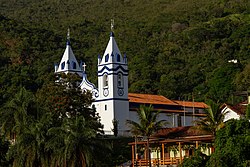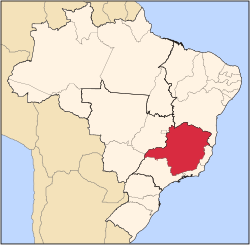Raposos | |
|---|---|
| Municipality of Raposos | |
 Igreja de Nossa Senhora da Conceição | |
 Location of Raposos within Minas Gerais | |
| Coordinates: 19°58′01″S43°48′14″W / 19.96694°S 43.80389°W | |
| Country | Brazil |
| State | Minas Gerais |
| Population (2020 [1] ) | |
• Total | 16,429 |
| Time zone | UTC−3 (BRT) |
Raposos is a Brazilian municipality located in the state of Minas Gerais. The city belongs to the mesoregion Metropolitana de Belo Horizonte and to the microregion of Belo Horizonte.


